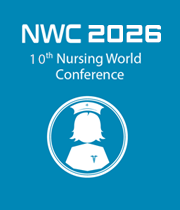Title : Bath basin elimination: The use of bathing cloths to reduce catheter-associated urinary tract infection in critically ill patients
Abstract:
Purpose: The purpose of this study was to compare the effectiveness of two methods of patient bathing and incontinence care on overall cost and patient outcomes for catheter-associated urinary tract infections (CAUTI) in critically ill patients.
Background: Healthcare-associated infections (HAI) are common, costly, and associated with significant morbidity and mortality. Prevention strategies are often underutilized, particularly for CAUTI. CAUTI rates by hospital are now publically available and the Centers for Medicare and Medicaid Services (CMS) will no longer reimburse hospitals for the additional costs of caring for patients who develop CAUTI. A growing body of evidence supports that the removal of reusable bath basins can reduce CAUTI.
Methods:
- CAUTI rates were measured for a 12-month period on all hospital units (2014) to provide a baseline measure.
- The 2014 standard of care in the general care units was once-daily bathing with soap, water, peri-spray and reusable bath basins; incontinence care was performed as needed using the same supplies.
- CHG was used in the ICUs for bathing and basins were used for incontinence care.
- In January 2015 a new bathing and incontinence care protocol was implemented where all basins were eliminated and replaced by a one-time use packaged bathing product.
- Compliance with the new protocol, product cost and CAUTI were measured for a 7-month period (January –May, 2015). Edit to reflect: 12-month period (January- December, 2015).
- Results:
- There were 22 CAUTIs in the 2014 time period and 7 (9 was the total number for the entire year) CAUTIs in the 2015 time period.
- This represents a 53% reduction was with 7 (needs to be updated) in CAUTI.
- Return-on-investment (ROI) was calculated by using the differences in supply costs associated with each bathing process as well as the cost avoidance attributed to CAUTI reduction.
- ROI for the 7-month intervention period was $34,222, with a projected annual ROI of $58,666. We now need the calculation for 12 month period.
- CAUTI reduction has been sustained for over three years: 2016 total CAUTI count was 7, 2017 total CAUTI count was 11.
Conclusion: The use of the new bathing and incontinence care protocol continues throughout the hospital, with ongoing tracking of compliance, clinical outcomes and cost. These findings add to the emerging body of evidence supporting the benefit of basin elimination on HAI reduction and the associated economic benefits.



